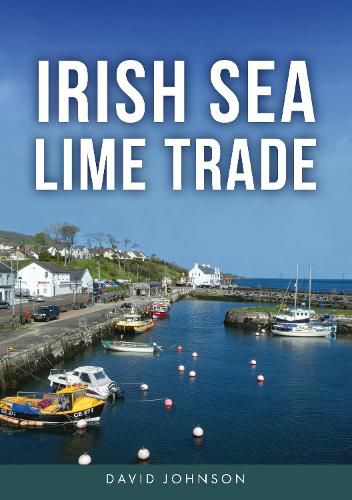Readings Newsletter
Become a Readings Member to make your shopping experience even easier.
Sign in or sign up for free!
You’re not far away from qualifying for FREE standard shipping within Australia
You’ve qualified for FREE standard shipping within Australia
The cart is loading…






Quarrying of limestone and converting it to quicklime was a major industry around the Irish Sea coasts for many centuries, and it is an aspect of these islands' industrial legacy that has received little attention. David Johnson has spent years researching it in the field and in archive centres and has been amazed by its scale and geographical extent. Up to the nineteenth century, quicklime was shipped from Gower and south Pembrokeshire across the Bristol Channel to Devon, and limestone was shipped from both source areas to coastal lime kilns all along the west coast of Wales from north Pembrokeshire to the Lleyn Peninsula. Limestone was quarried and shipped from Anglesey to, for example, Harlech Castle when it was first built, and to the Mersey, as well as from North Wales to the Dee and Mersey estuaries. There was a major trade in limestone from west Cumbria to what is now Dumfries and Galloway and to and from the Isle of Man, and across the Irish Sea to and from ports all the way from Galway, round the south and east Irish coasts as far north as Ulster. Most recently, and still surviving, is the export of limestone from North Wales to southern England and Scandinavia.
Thoroughly researched and with fascinating images, David Johnson reveals the little-known story of the Irish Sea lime trade.
$9.00 standard shipping within Australia
FREE standard shipping within Australia for orders over $100.00
Express & International shipping calculated at checkout
Quarrying of limestone and converting it to quicklime was a major industry around the Irish Sea coasts for many centuries, and it is an aspect of these islands' industrial legacy that has received little attention. David Johnson has spent years researching it in the field and in archive centres and has been amazed by its scale and geographical extent. Up to the nineteenth century, quicklime was shipped from Gower and south Pembrokeshire across the Bristol Channel to Devon, and limestone was shipped from both source areas to coastal lime kilns all along the west coast of Wales from north Pembrokeshire to the Lleyn Peninsula. Limestone was quarried and shipped from Anglesey to, for example, Harlech Castle when it was first built, and to the Mersey, as well as from North Wales to the Dee and Mersey estuaries. There was a major trade in limestone from west Cumbria to what is now Dumfries and Galloway and to and from the Isle of Man, and across the Irish Sea to and from ports all the way from Galway, round the south and east Irish coasts as far north as Ulster. Most recently, and still surviving, is the export of limestone from North Wales to southern England and Scandinavia.
Thoroughly researched and with fascinating images, David Johnson reveals the little-known story of the Irish Sea lime trade.